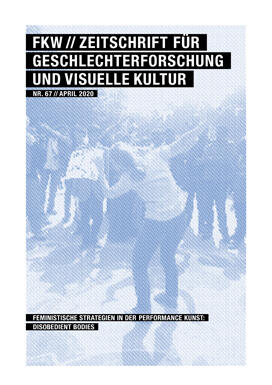
Wie ich ein Etwas mit gespitzten Ohren werde und wie Kofferworte que(e)r in der Landschaft stehen
Dorothea Rust
published only in German in
FKW // Zeitschrift für Geschlechterforschung und visuelle Kultur, Nr. 67 (2020): Feministische Strategien in der Performance Kunst: Disobedient Bodies, Hrsg. Sigrid Adorf und Sabine Gebhardt Fink
abstract
«How I become a something with pricked ears and how portmanteau words stand crosswise and queer in the landscape»
I have been dealing with the donkey in my artistic practice for quite some time. The story begins in 2015: I lie down next to a dead, completely hairy donkey in the Atacama Desert (Chile), the driest desert in the world. A photo is taken, a first image work and a performance emerge.
In my contribution, I deal with my own artistic writing by means of a text by Hélène Cixous, titled «Gespräch mit dem Esel. Writing Blindly" (conversation with the donkey. writing blindly) with my own artistic performance\art practice. For Cixous' sentences act as vectors for me to align thoughts about my image and performance series «L'animoteur 1 to 7», realised between 2015 and 2018. I 'stretch' her sentences and mix them with my own lines of thought in order to arrive at condensed and surprising insights. I want to explore the question of how (my) performance and image works, intervening in spaces, can shake up existing situations.
Cixous writes physically, performatively and falls into writing, so to speak; I want to fall into my performances with her reflections. My text is surrounded by visuals from the performance «L'animoteur_7 - mujeres Y burros Y plantas Y arboles Y plastico Y pimenton Y cactus Y vocabulario Y terminos Y lenguaje Y palabras Y non-tango Y esta lana se llama lana de llama», realised in 2018 in the garden of PROA21, an exhibition space in Buenos Aires. I developed the work after travelling in the north of Argentina.
The donkey in Cixous' essay is not a metaphor. Likewise, I do not understand my visual and performance works of «L'animoteur» as donkey metaphors. The donkey does not stand for something, the donkey is the something. The donkey permeates the text in Cixous as a connection between resistance and writing. The figurative stubbornness of the donkey as a survival strategy can be seen as a resistance and a quality of sustainability, that is, as a value in our globally economised world. My text does not only want to describe the performance, it wants to continue writing or transforming or moving itself in the direction of Performance\Art? In the garden of PROA21, I 'moved through' the resistant, queer aspects of people, animals and plants through language and bodily-somatic presence. Or would the sentence be more readable like this: Through language and bodily-somatic presence, I have 'moved through' the resistant, queer nature of people, animals and plants in the PROA21 garden.
Based on the analysis of these suitcase words, I reflect on my stance as 'queer', which can queerly and crosswise unfold its performative weight, its virtuality and potentiality for otherness. When terms like gender and queer are invoked in the performative situation, I add a queer-feminist 'twist' to them. I understand this practice as an active stance that aims to develop a sensorium for social, ecological and political concerns in the viewers. The effects of marginalisation of people and entities of all origins and gender relations is the great political problem of our time. ...